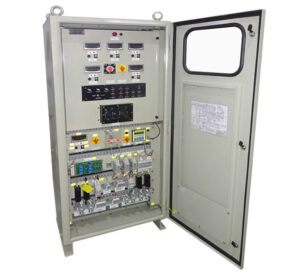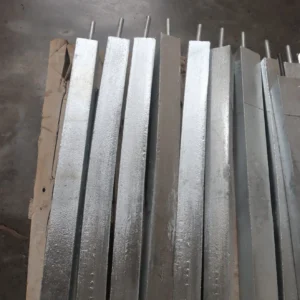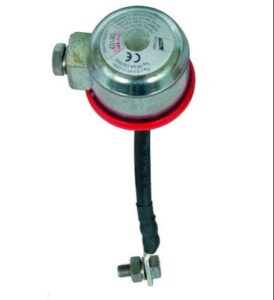Product
Our Products
Below is an outline that are used to structure the content for a range of corrosion prevention products:

Mg Anode
Mg and its alloys have been used as sacrificial anodes for several decades in cathodic protection of oil and gas pipelines, oil drilling platforms cables, heat exchangers, aircraft, ships, and bridges. In these applications, Mg acts sacrificially and transfer corrosion activity away from the structural materials to be protected (cathode).

Zinc Ribbon Anode
Zinc ribbon anodes are used in a variety of applications: for cathodic protection on buried pipelines, for A.C. mitigation on pipelines, for sacrificial cathodic protection of secondary bottoms on above-ground storage tanks, for A.C. mitigation grounding mats, and for many other corrosion protection applications.

Solid State Decoupler
The Solid State Decoupler (SSD) functions as a DC voltage level clamping device in buried pipeline and storage tank systems. It can, at the same time, mitigate AC voltage. This feature allows up to 15A AC induced current to pass and prevents the flow of DC current while the DC voltage remains below the predetermined design blocking threshold.

Transformer Rectifier Unit(TRU)
Cathodic protection rectifiers are the external power source used in impressed current cathodic protection systems (ICCP), to convert alternating current (AC), to direct current (DC). In ICCP systems, current is discharged off of the anode and onto the structure to prevent corrosion.

Zinc Anode
Sacrificial anode cathodic protection involves attaching more reactive metals, such as zinc or magnesium, to the pipeline. These sacrificial anodes corrode preferentially, diverting corrosion away from the pipeline and extending its lifespan. This method is particularly effective in environments with low soil resistivity.

Spark Gap Arrester
In order to protect the pipe insulation and the insulating flanges against damage caused by over voltages, isolating spark gaps are used. In the event of an overvoltage, the isolating spark gap becomes low inpendance and discharges the voltage. Lightning protection equipotential bonding is thus ensured.
What We Have Here for You
A descriptive paragraph that tells clients how good you are and proves that you are the best choice that they’ve made.
24x7 Access
Augue Velit Cursus Nunc Quis Gravida Magna Mi A Libero.
Conference Room
Augue Velit Cursus Nunc Quis Gravida Magna Mi A Libero.
Printing/FAX
Augue Velit Cursus Nunc Quis Gravida Magna Mi A Libero.
Gigabit Internet
Augue Velit Cursus Nunc Quis Gravida Magna Mi A Libero.
Projector
Augue Velit Cursus Nunc Quis Gravida Magna Mi A Libero.
Week's Supplies
Augue Velit Cursus Nunc Quis Gravida Magna Mi A Libero.
Flexible Work Space
Augue Velit Cursus Nunc Quis Gravida Magna Mi A Libero.
Mail Delivery
Augue Velit Cursus Nunc Quis Gravida Magna Mi A Libero.
Pet Friendly
Augue Velit Cursus Nunc Quis Gravida Magna Mi A Libero.

Space to make your
greatest impact.
A descriptive paragraph that tells clients how good you are and proves that you are the best choice that they’ve made.
Frequently Asked Questions
How to Prevent Corroision?
- Protective Coating. A fresh coat of paint will enhance the appearance of your metal structure and prevent corrosion. …
- Metal Plating. Theoretically, plating is almost similar to painting. …
- Corrosion inhibitors. …
- Sacrificial coatings. …
What are the two most important factors in preventing corrosion?
According to NAVAIR 01-1A-509-1, “The two most important factors in preventing corrosion, and the only ones which can be controlled by field personnel, are the removal of the electrolyte and the application of protective coatings.
What are the two main types of corrosion?
Broadly speaking, corrosion can be separated into two distinct types: generalized and localized.
What is the reason for corroision?
General corrosion occurs when most or all of the atoms on the same metal surface are oxidized, damaging the entire surface. Most metals are easily oxidized: they tend to lose electrons to oxygen (and other substances) in the air or in water. As oxygen is reduced (gains electrons), it forms an oxide with the metal.
